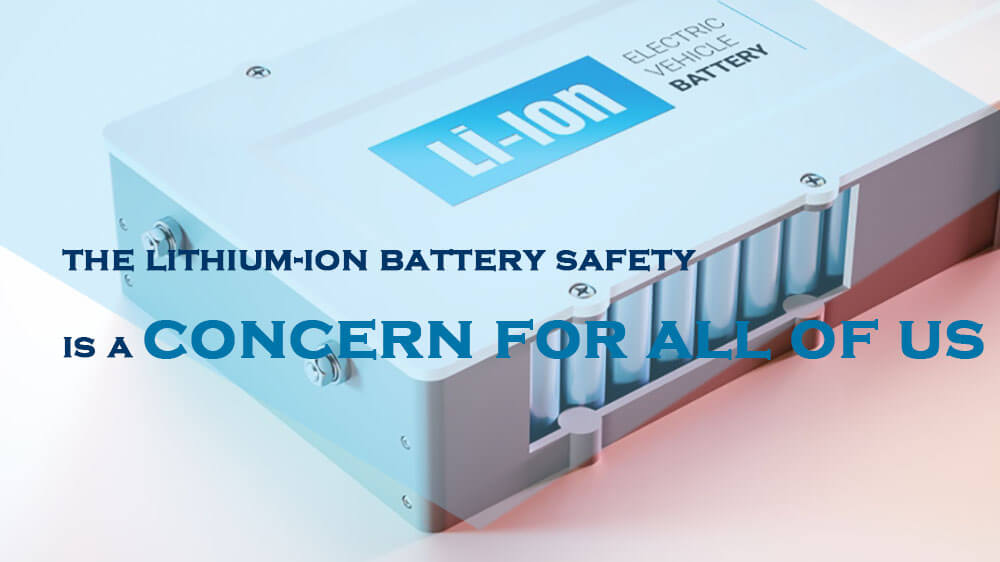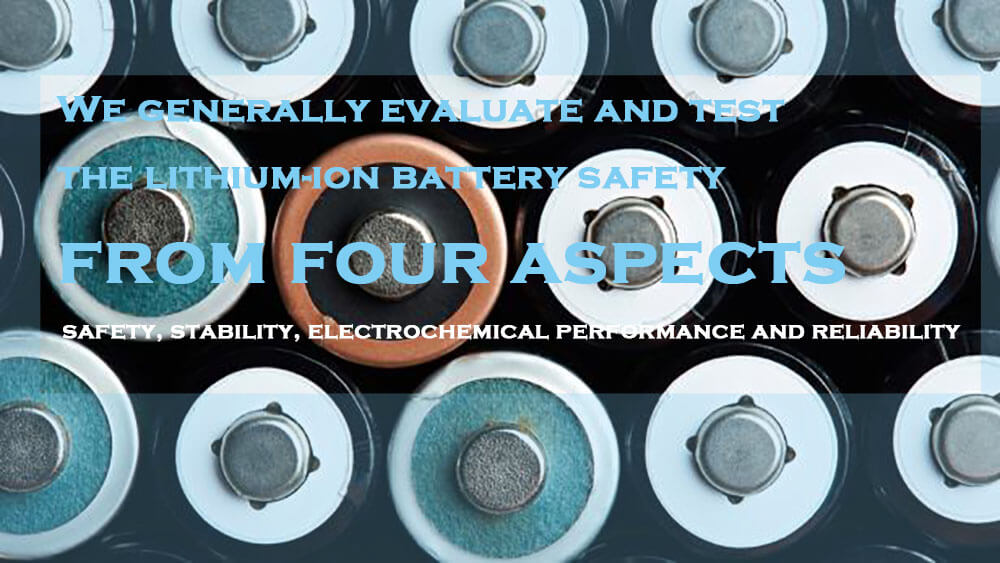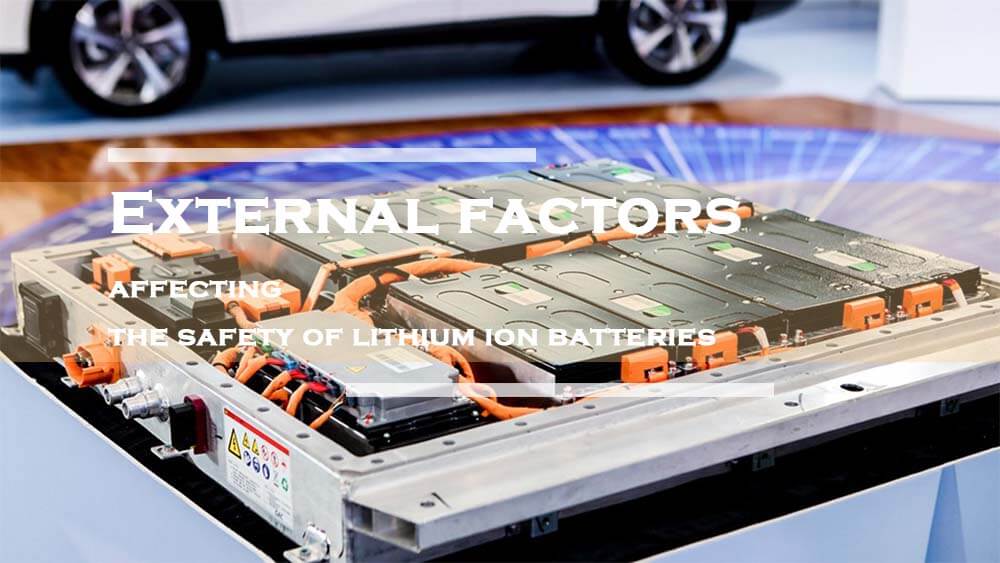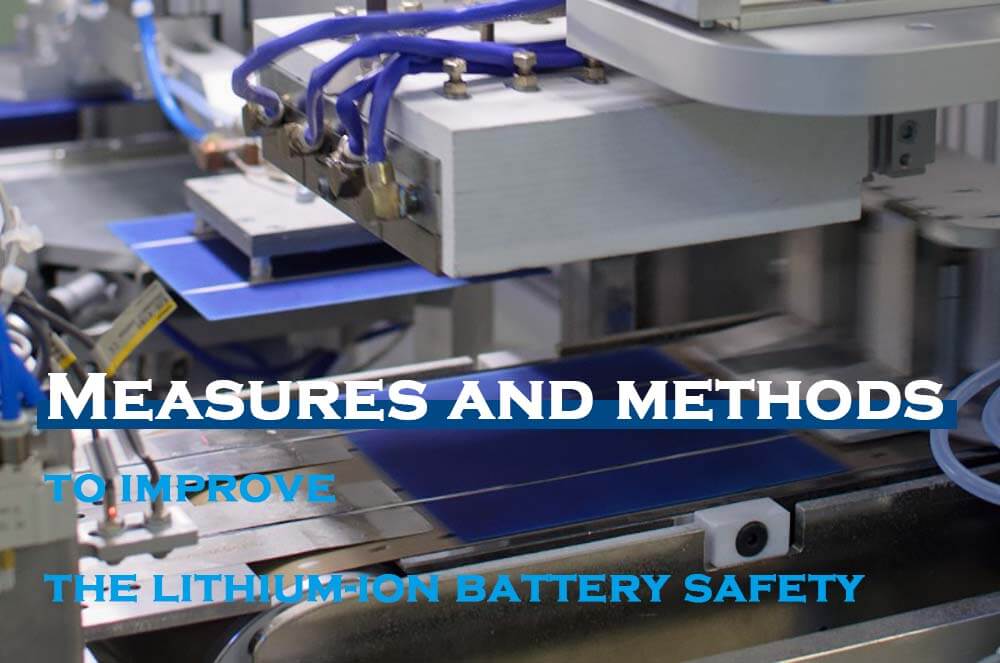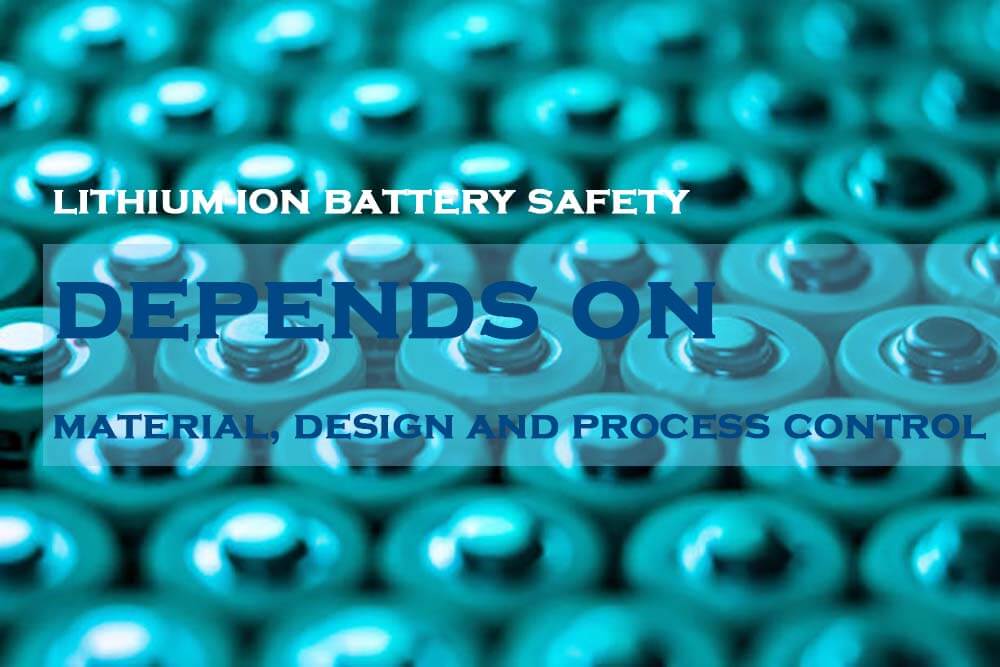Home » Lithium-ion battery safety » Why lithium battery is dangerous?Lithium-ion battery safety tips
Why lithium battery is dangerous?Lithium-ion battery safety tips
In today’s electronic information age, lithium-ion batteries have been widely used in every aspect of our life. Lithium-ion batteries can be found in electronic devices such as mobile phones, tablets and notebooks, as well as large power equipment and systems such as new energy vehicles, photovoltaic systems and data centers. Therefore, the lithium-ion battery safety is a concern for all of us.

This article will answer this question and give you the lithium-ion battery safety tips. We will first introduce some aspects of evaluating the lithium-ion battery safety and the corresponding tests. Then we will describe the causes of safety accidents of lithium ion battery. Then we will analyze the internal and external factors that cause issues of lithium-ion battery safety in detail.
After reading this article, you will not panic about the lithium-ion battery safety without knowing how to use them correctly. So let’s get started.(And if you want to know the the safety protection measures of lithium ion battery, please click to read are lithium batteries safe article on our website )
Performance and testing of lithium-ion battery safety
We generally evaluate and test the lithium-ion battery safety from the following four aspects: safety, stability, electrochemical performance and reliability.
- Safety: mainly depends on the performance of lithium ion battery in the case of short circuit, overcharge and thermal shock.
- Stability: mainly depends on whether the lithium ion battery can meet the requirements in circulation and storage, such as the test of 500 cycles.
- Electrochemical performance: test the discharge performance of battery at different rates of current or at high and low temperature.
- Reliability: Test whether the battery can cause accidents under vibration, impact, drop and squeeze.
Causes of safety accidents in lithium ion batteries
Because of its high energy density, there is a higher chance of accidents for lithium. In the process of using lithium battery, in addition to the requirements of the cell itself to be safe and reliable, the finished product of battery need a battery management system and thermal management system to achieve the lithium-ion battery safety.
For lithium-ion batteries, there are no more than three reasons for failure reaction: internal short circuit, high temperature, over (electric) voltage.
These three factors cause the temperature to reach a certain level, triggering a series of internal chemical reactions, further heat, gas, resulting in fire and explosion. Ultimately, it all comes down to temperature, so the failure reaction of the cell is called “thermal runaway”.
| Temperature | Reaction |
|---|---|
| 60℃ | Lithium hexafluorophosphate begins to decompose and produce heat |
| 70℃ | Anode SEI film began to decompose and produce heat and gas |
| 100-120℃ | Lithium embedded anode reacts with electrolyte to produce heat and gas |
| 125℃ | It is the melting point temperature of PE separator , and is also a large shrinkage temperature, prone to rupture/deformation caused by internal short circuit |
| 155℃ | Softening temperature of PP separator |
| 165℃ | Melting point of PP separator |
| 175℃ | Melting point of positive PVDF binder |
| 270℃ | General decomposition temperature of ternary material (with oxygen evolution) |
| 750℃ | Decomposition temperature of lithium iron phosphate (without oxygen evolution) |
- 1) Internal short circuit. It refers that the internal foreign body pierce the separator (only 10 micron thick), leading to direct contact between the internal cathode and anode, instantly produce a lot of heat, which is also the root cause of battery spontaneous combustion;
- 2) Overcharge (over voltage). When the ternary cathode material is overcharged to 5.0-5.2V, it has strong oxidability, which oxidizes the electrolyte/separator and instantly generates a large amount of heat.
- 3) High temperature. Under extreme conditions, the battery pack is heated to more than 120℃ from the outside, or the part of the battery shell receives a large amount of heat instantaneously (such as the external circuit short circuit through the shell).
- In addition to the above three points, other factors will not lead to problems of lithium-ion battery safety such as fire and explosion; It can also be said that other abuse factors are the deformation of the three, which will be explained one by one below.
Internal factors affecting the lithium-ion battery safety
- (1) Material: cathode material (eg.The thermal stability of LiCoO2 and its reactivity with electrolyte)、stability and ratio of anode material、composition of electrolyte、separator selection.The material system affects the overcharge and thermal stability of the entire battery.
- (2) Battery structure: rationality of structural design
- (3) Process control of battery manufacturing: pole piece burr, pole powder shedding, winding counter position. And screening of bad batteries.
- (4) Short circuit
Micro short circuit: mainly by the cathode and anode pieces of the micro powder or convex point piercing separator, resulting in short circuit inside the cell. Slight case will cause high self-discharge rate and affect the lithium-ion battery safety, serious case will cause battery explosion.
Powder inside short circuit: the inner strip acne wear separator, resulting in cell bulge.
Core internal short circuit: mainly because the core pole ear is too long, and the pole piece or contact with the shell caused by short circuit. Or pole ear compression coil core, resulting in cathode and anode short circuit, causing hot core, and serious case will lead to explosion.
External factors affecting the lithium-ion battery safety
External short circuit.
When there is a breakdown or improper usage, the battery protection circuit board will short circuit, making the battery release a large current, and the temperature rise, causing internal short circuit. This will cause explosion accident sometimes.
Overcharge, over discharge:
The cathode material or electrolyte of a battery can decompose during overcharge or over discharge, releasing heat and gases, increasing internal pressure and, creating smoke. In severe cases, explosions and fires will happen.
High external temperature.
The decomposition of cathode material or electrolyte of the battery could also be caused by excessive external temperature. At the same time, too high external temperature will damage the internal separator and external metal shell of the battery, causing deformation, melting, and may cause a short circuit.
Measures and methods to improve the lithium-ion battery safety
So after reading the above part of the article, you may want to ask, how to prevent lithium-ion battery safety problems?
(1) The internal short circuit of the lithium-ion battery is mainly solved from the following aspects:
-Optimization of battery structure design.
-Use automation equipment and improvement tools in key processes.
-Remove micro short circuit and internal short circuit cells through strict storage conditions.Serious self-discharge cell has security risks. Under normal conditions, the half-charged cell has an open-circuit voltage drop of 15-20mV in about 1 month, 25-35mV in 2 months, and 50-60mV in half a year. Through strict storage conditions, we can screen battery with micro short circuit and internal short circuit.
-The stability of the material system also contributes to the improvement of safety.
(2) For external short circuit, overcharge, and thermal stability mainly be solved from the battery material system.
election and treatment of anode and cathode materials: for example, LiCoO2 is unstable and emits oxygen when it is >4.2V. At the same time, the electrolyte decomposed at >4.2V and reacted with LiCoO2 to generate a lot of heat, resulting in a sharp increase in the internal pressure of the cell and explosion.
Therefore, cathode and anode anode materials with good safety and stability should be selected. In order to reduce the reactivity of anode and anode materials, the material with larger surface is treated with secondary treatment.
Electrolyte composition and additives improve the stability and safety of the battery itself. Specifically, they can improve the cycling and storage of the battery, improve the safety of the overcharge of the battery, and improve the high and low temperature performance of the cell.
That’s all the content of this lithium-ion battery safety tips. Now we see that the lithium-ion battery safety depends on material, design and process control. Therefore, the safety of lithium ion battery is a comprehensive problem, which should be solved from the aspects of battery material system, structure design and process control.


